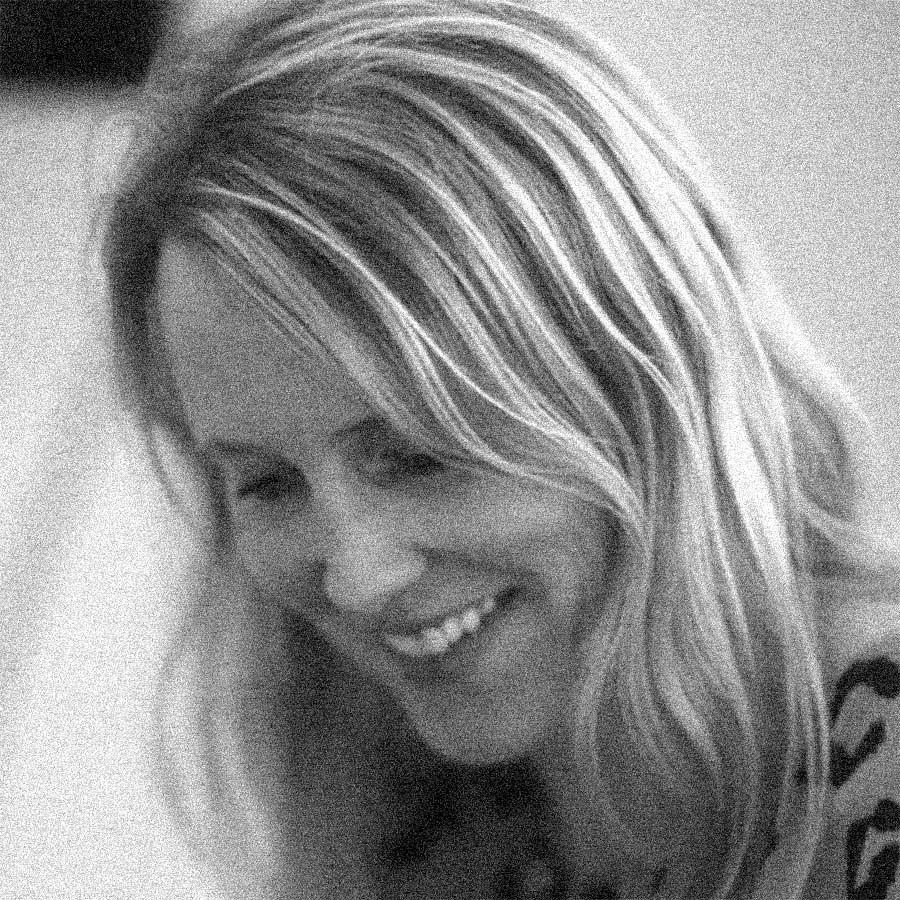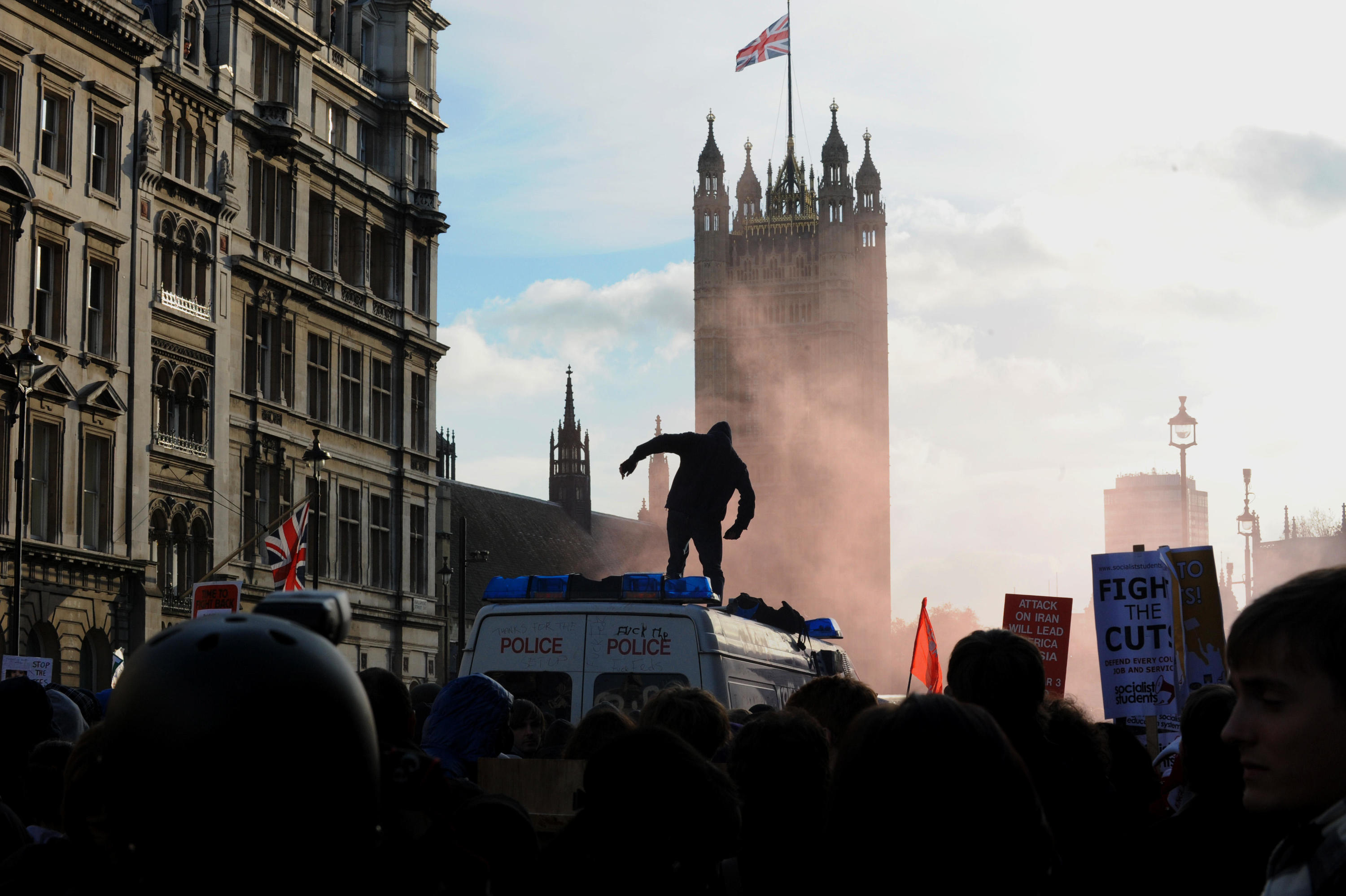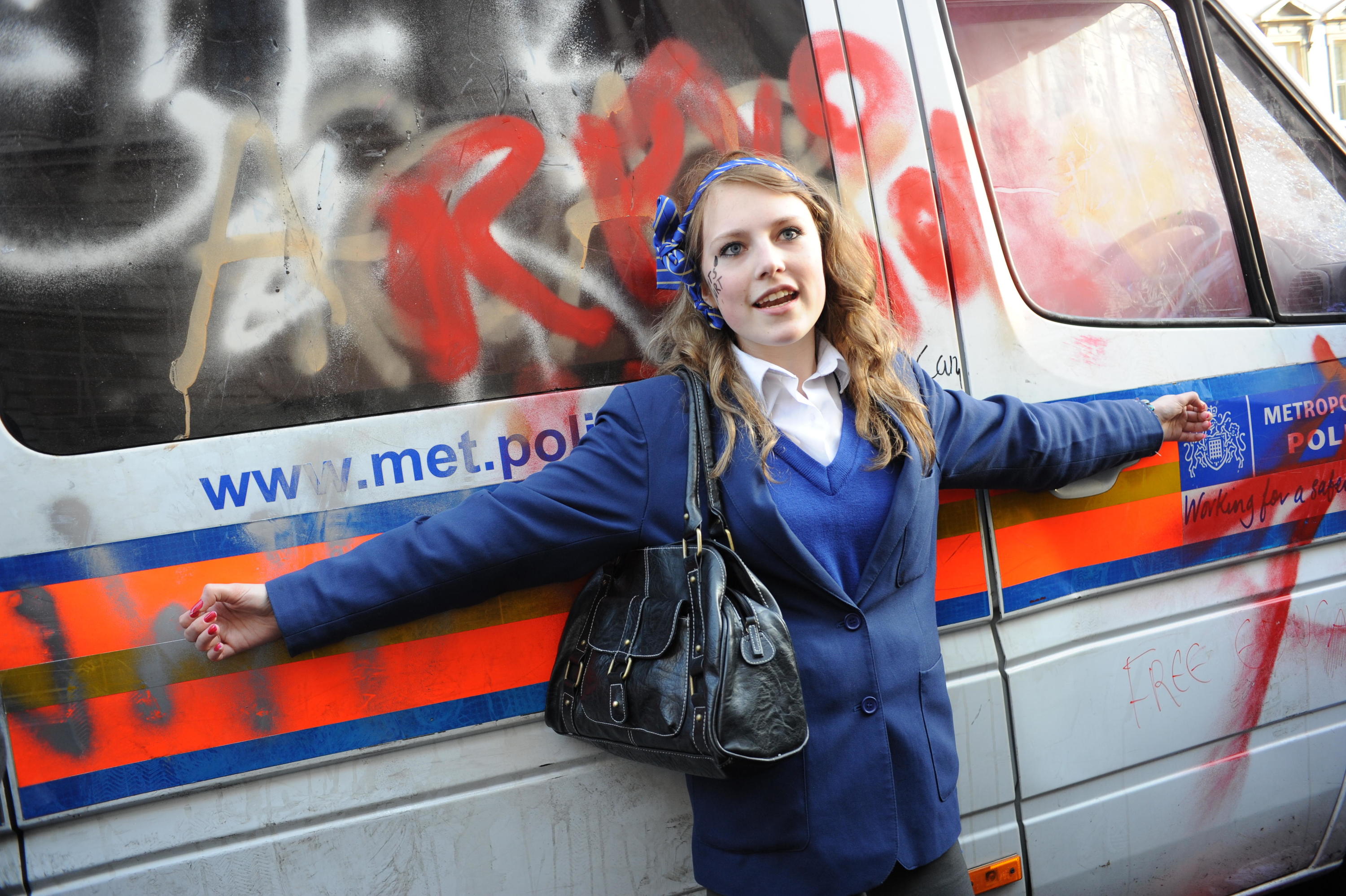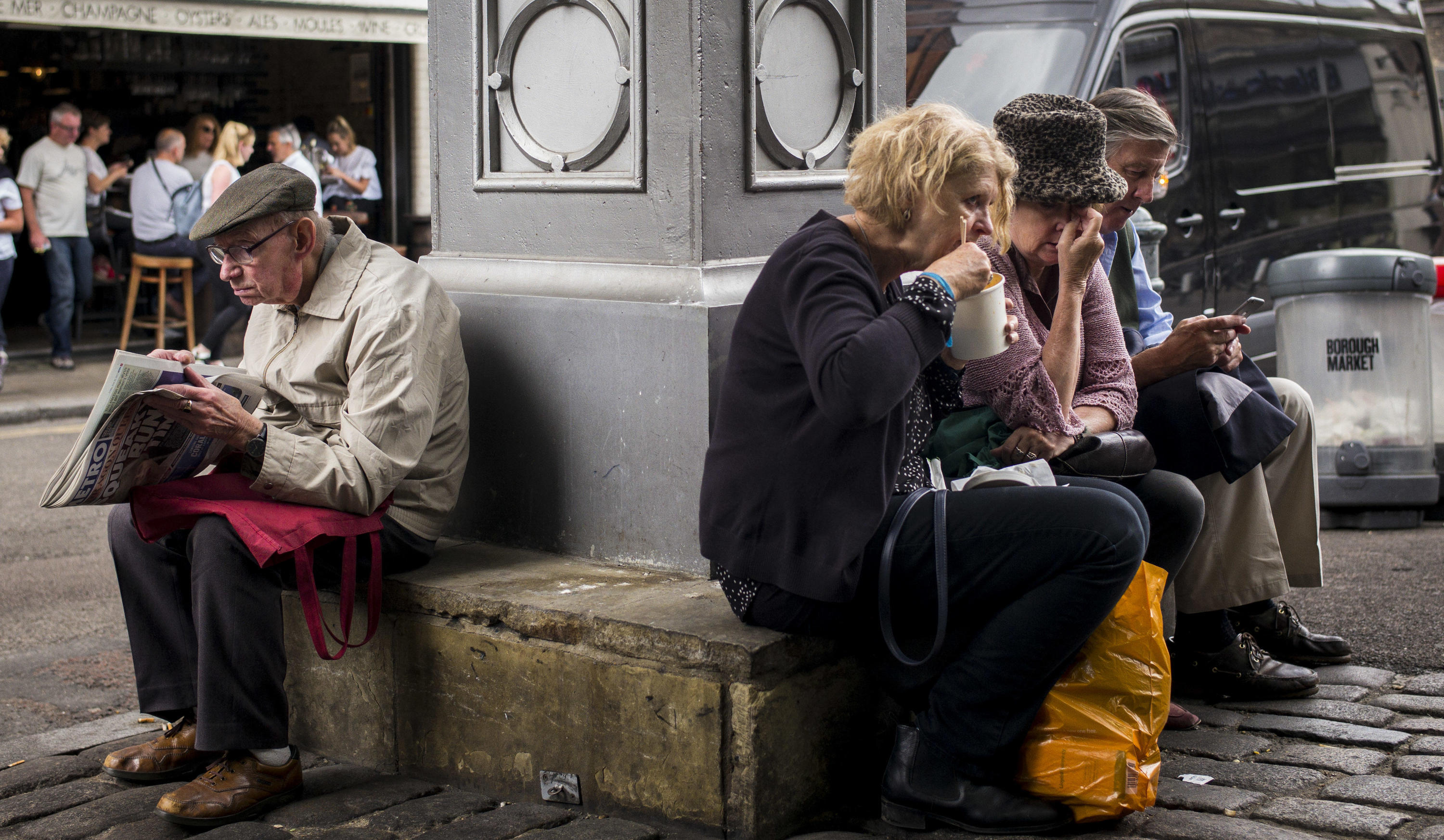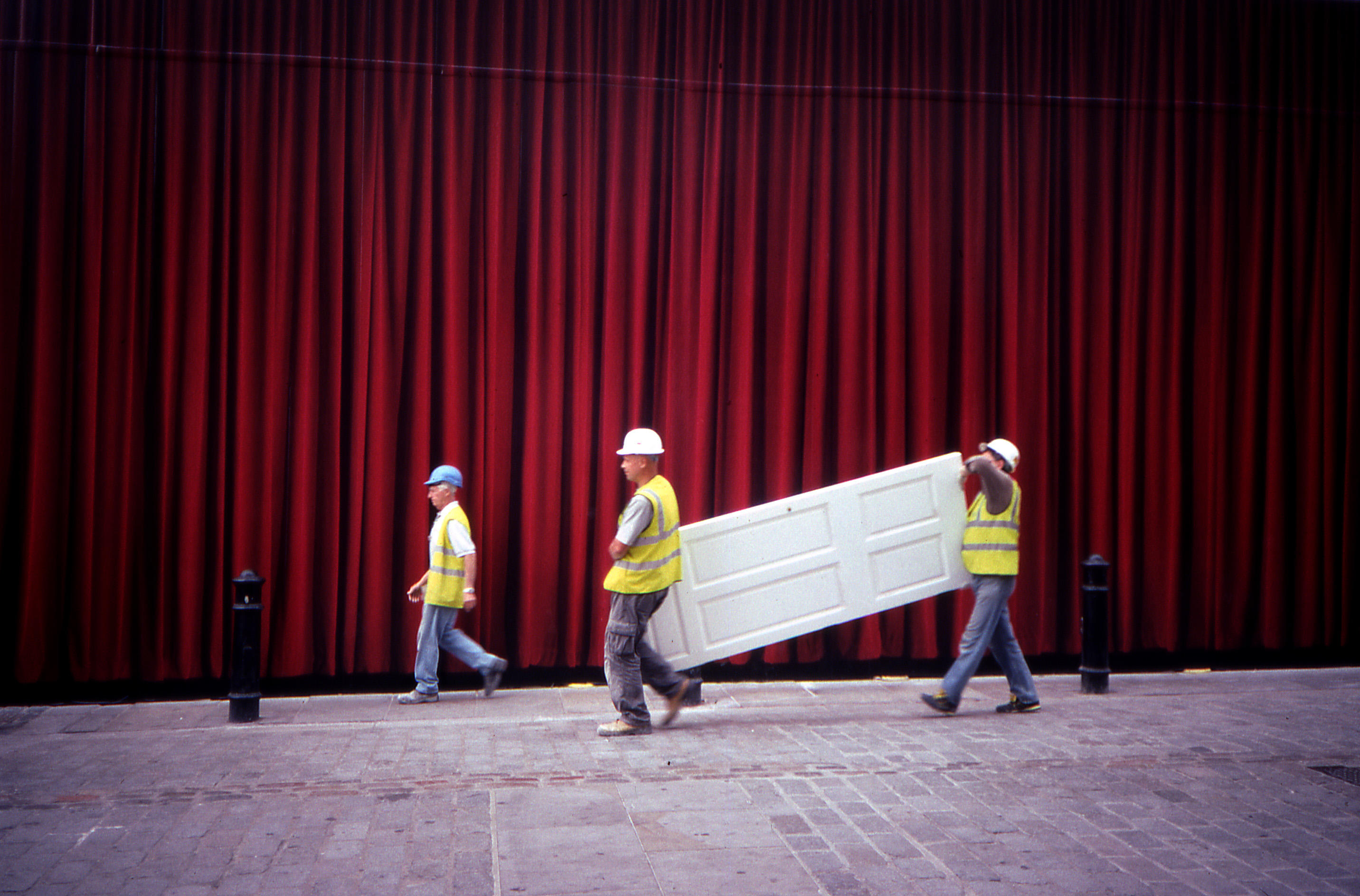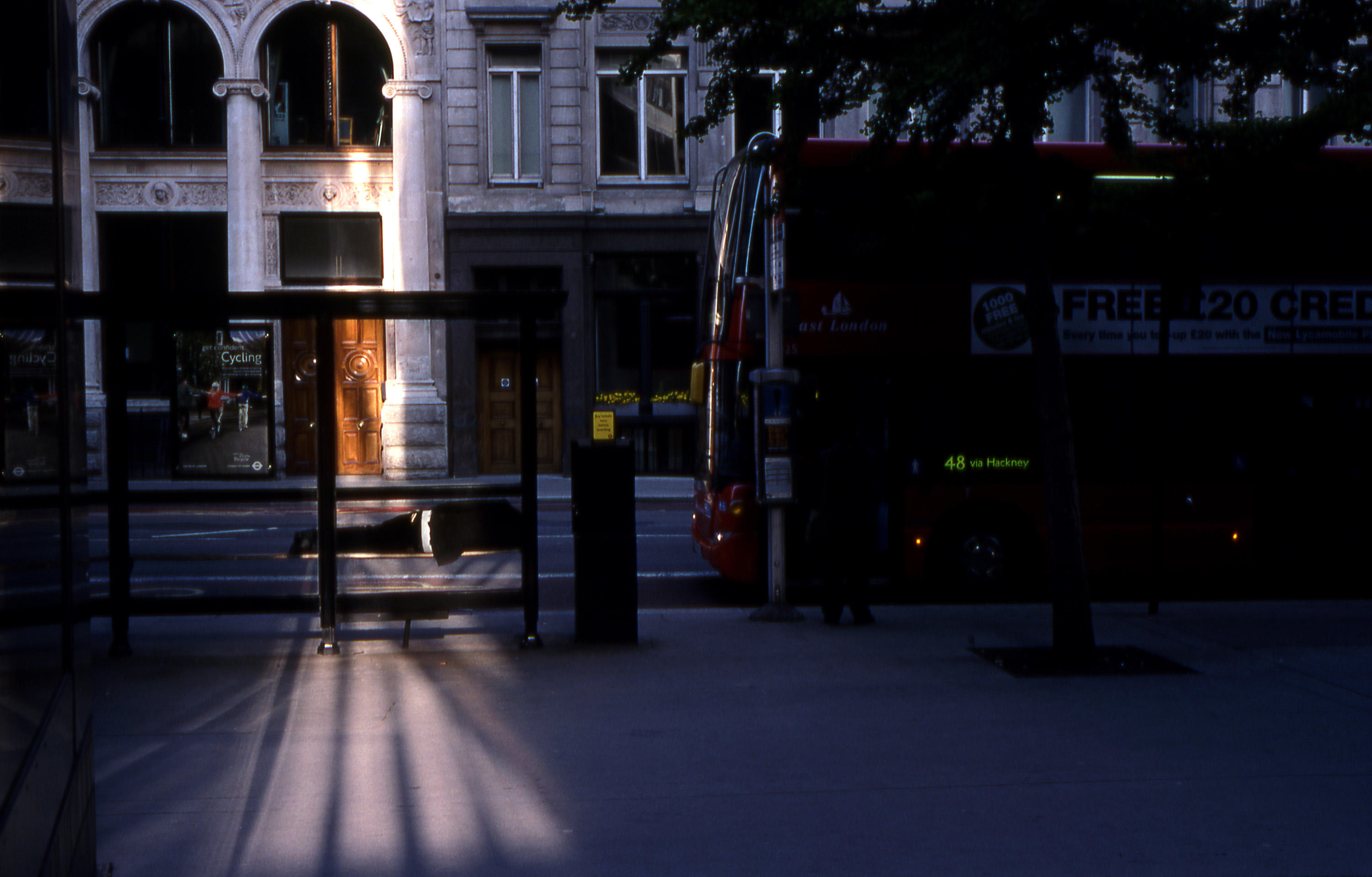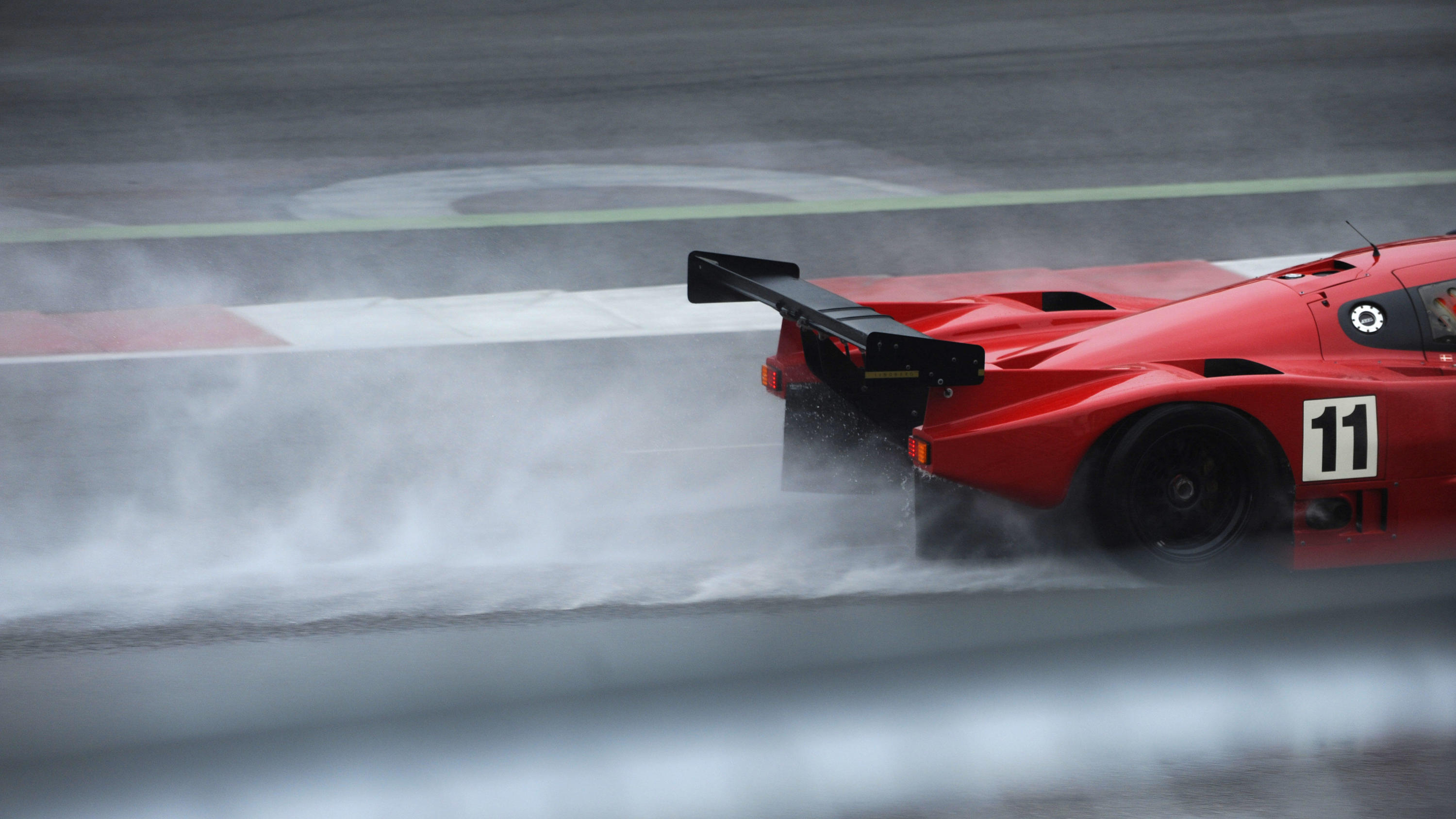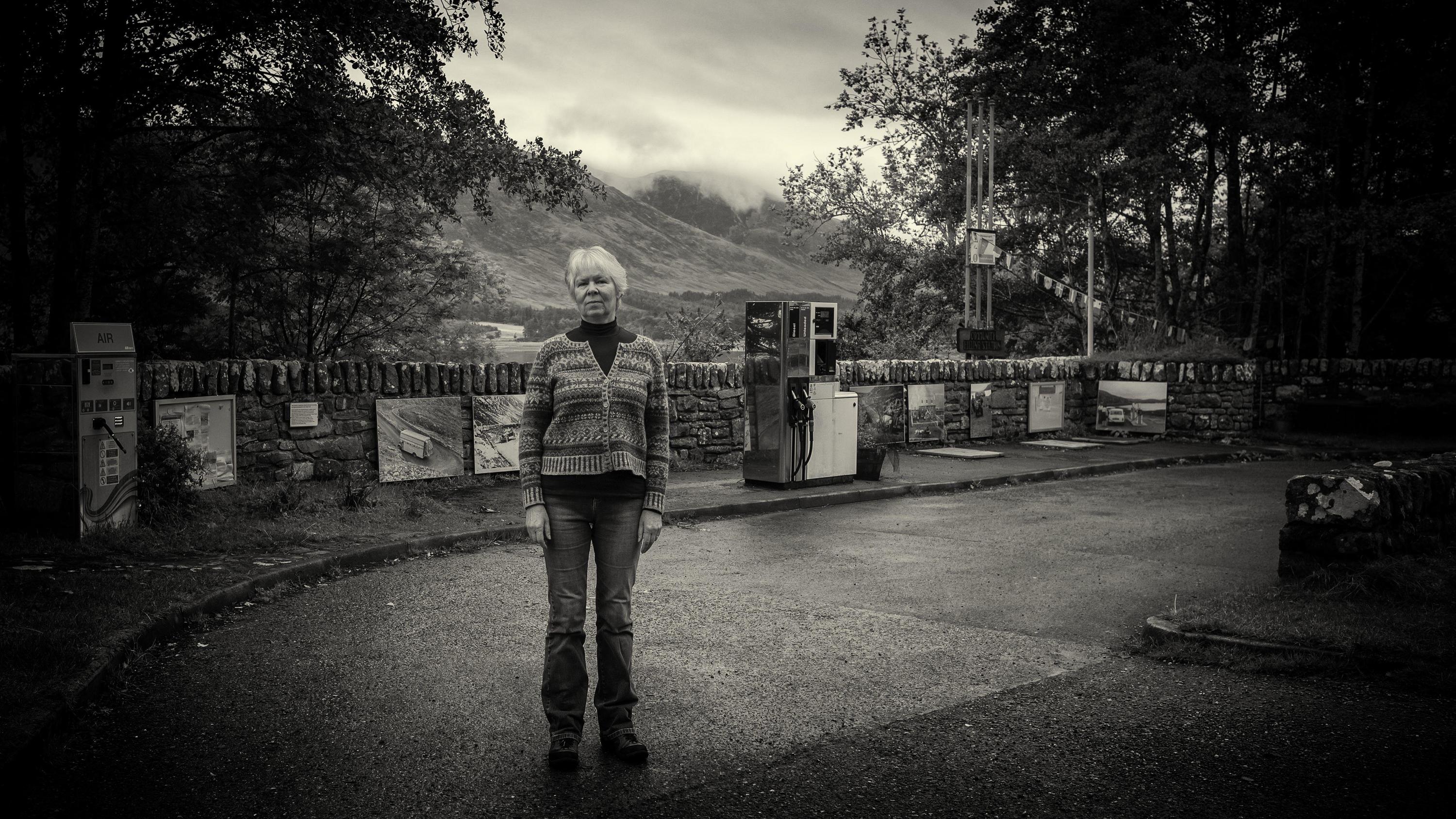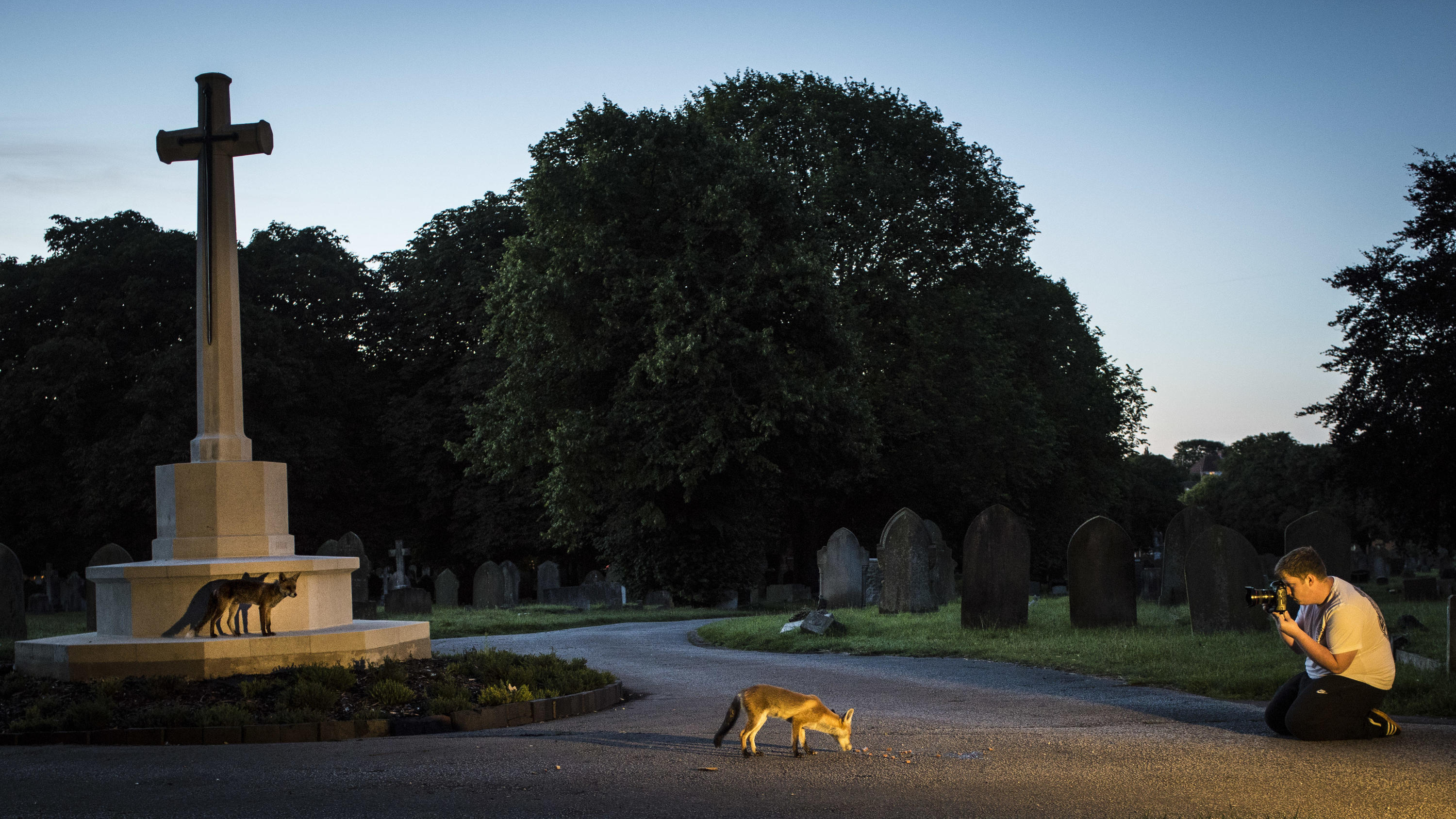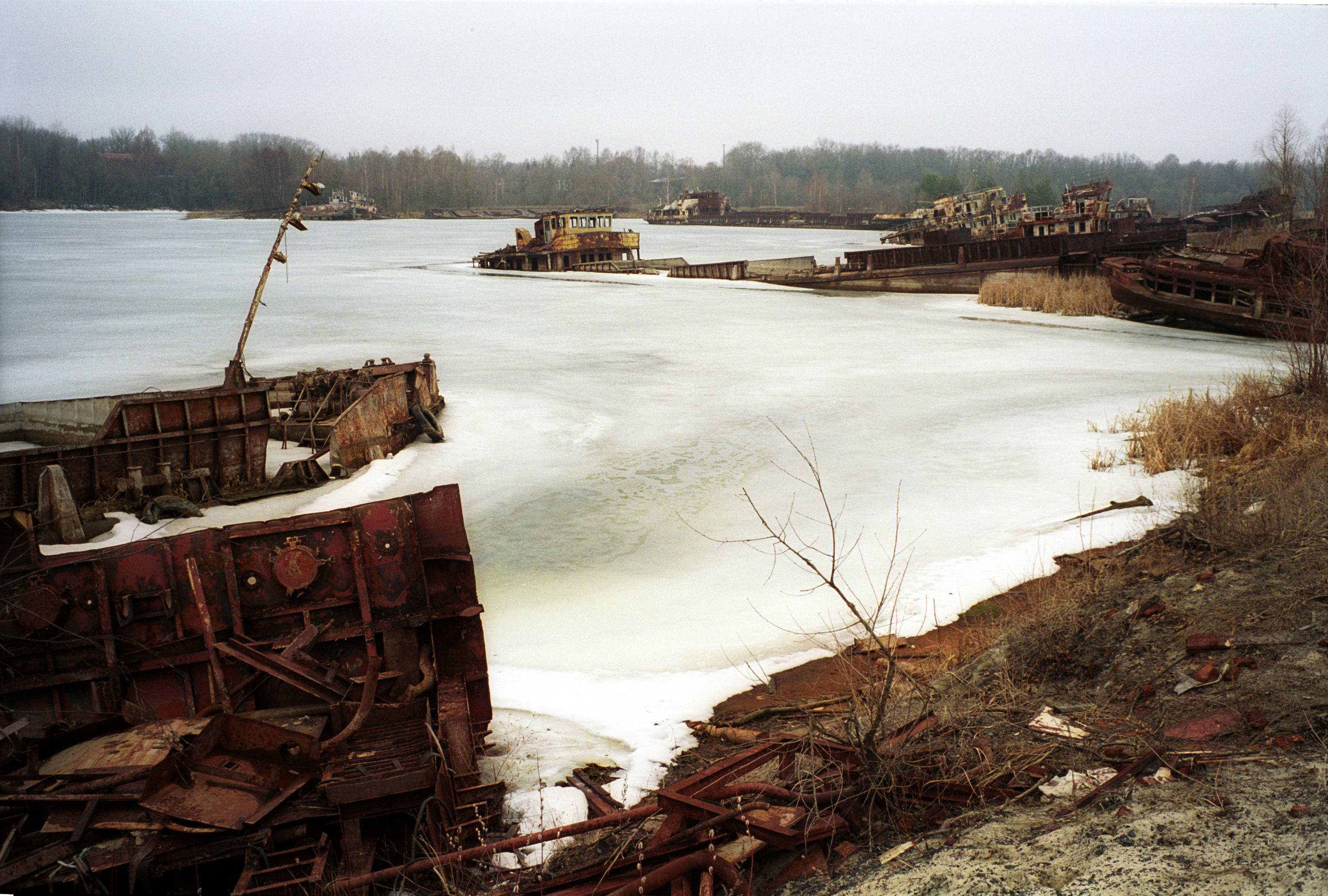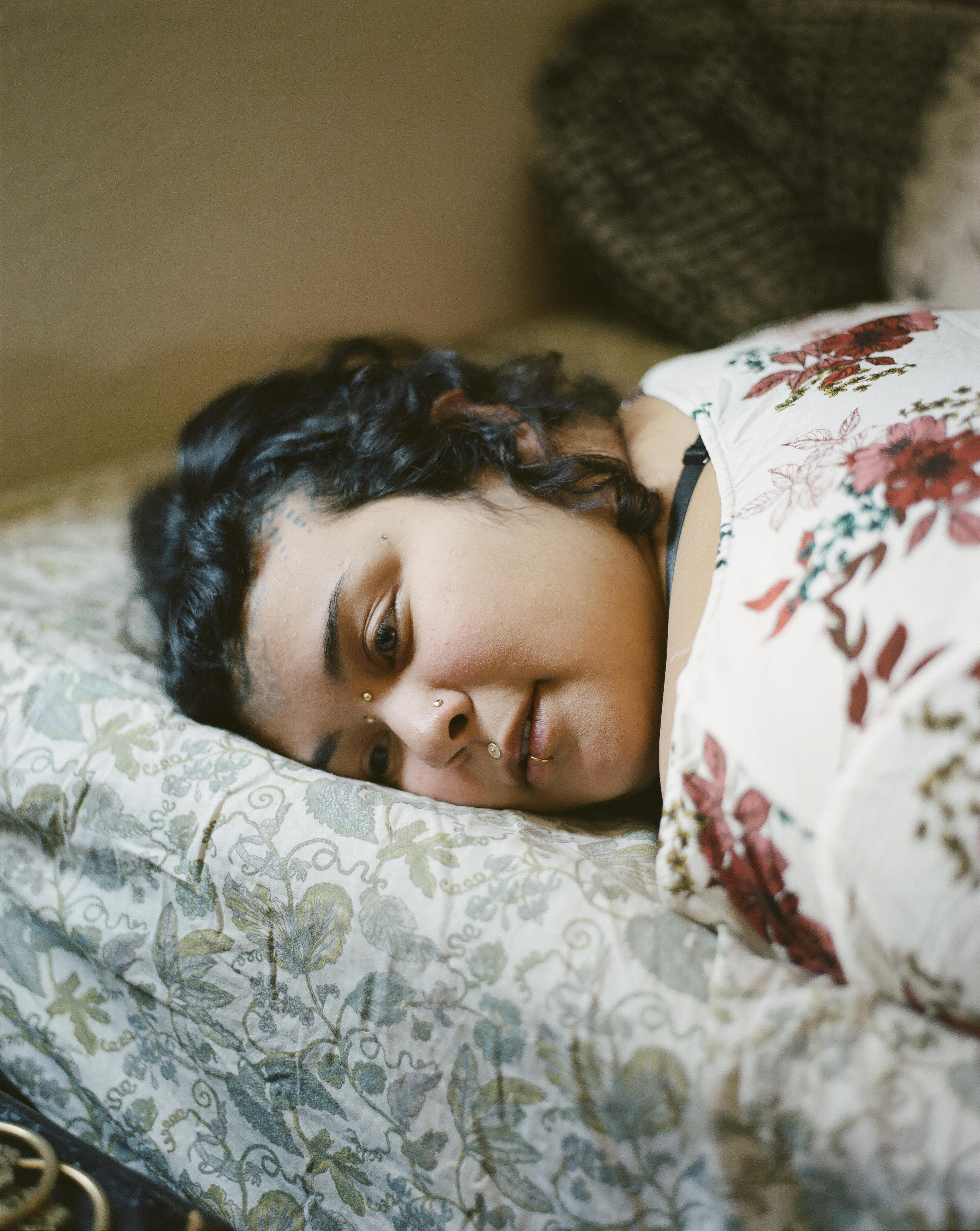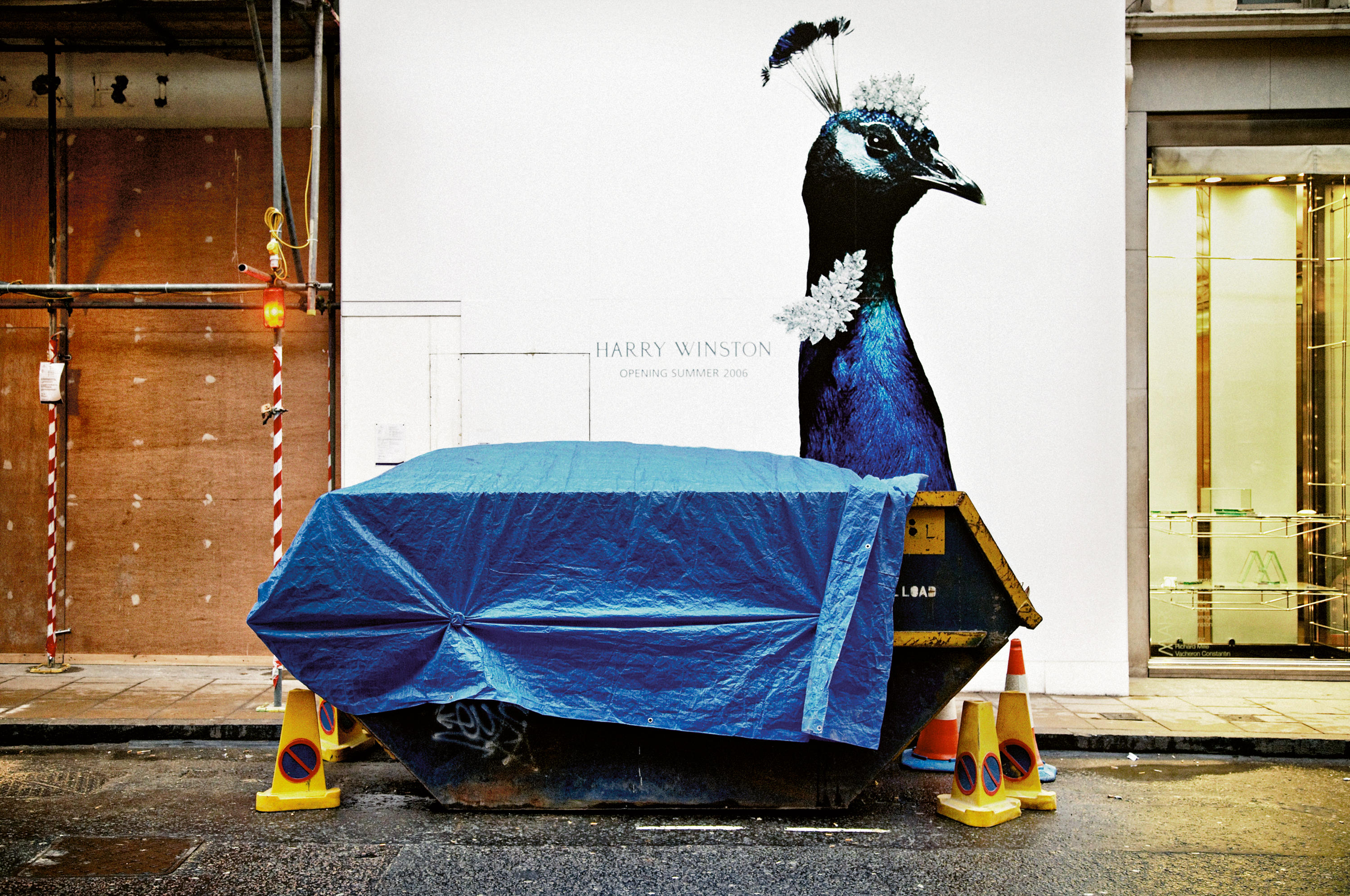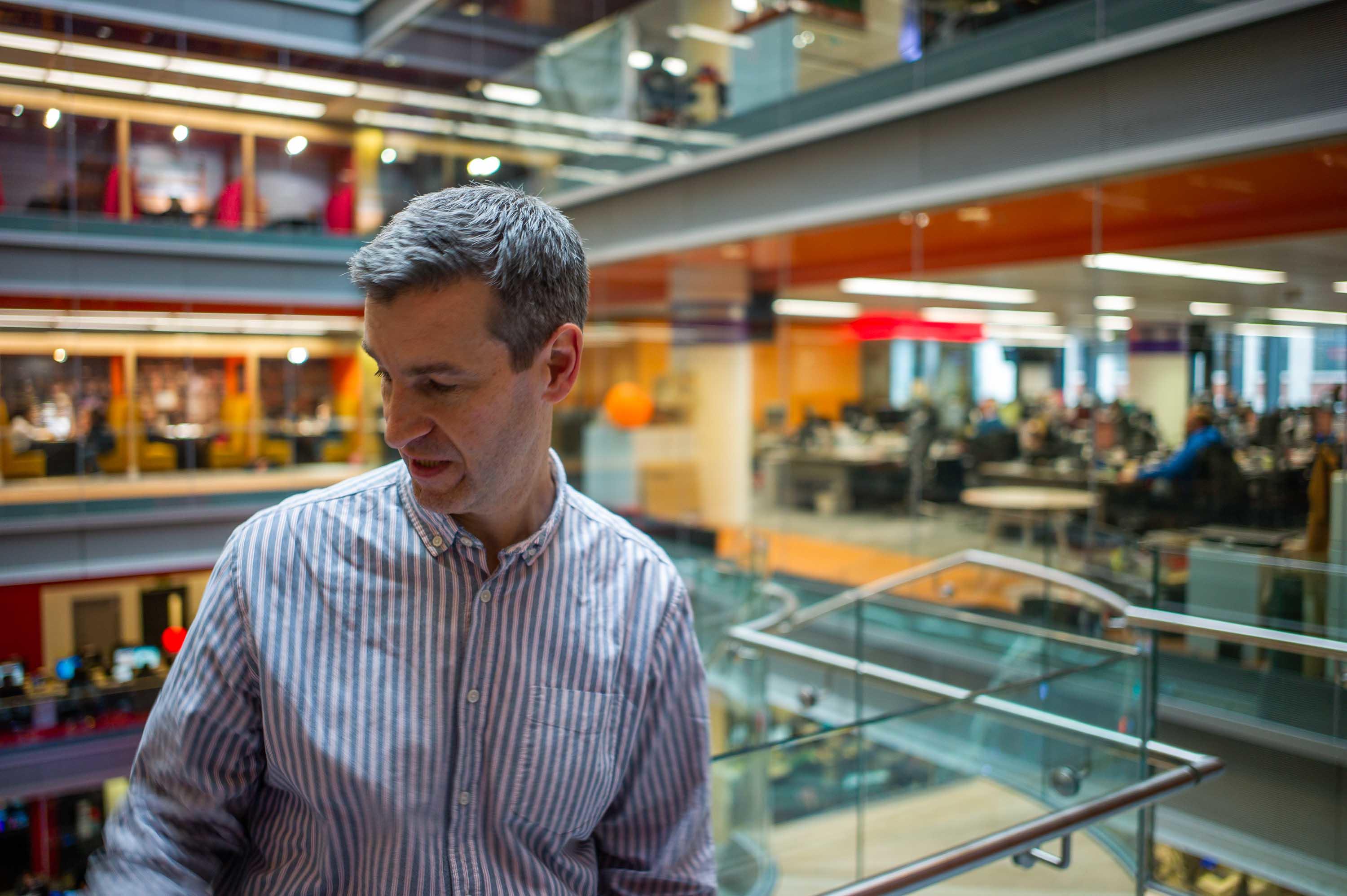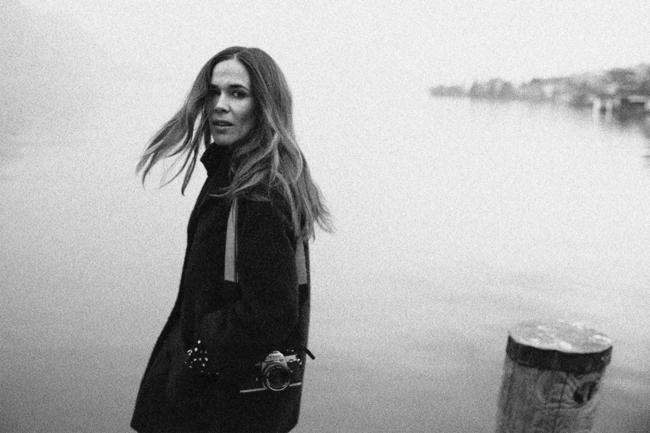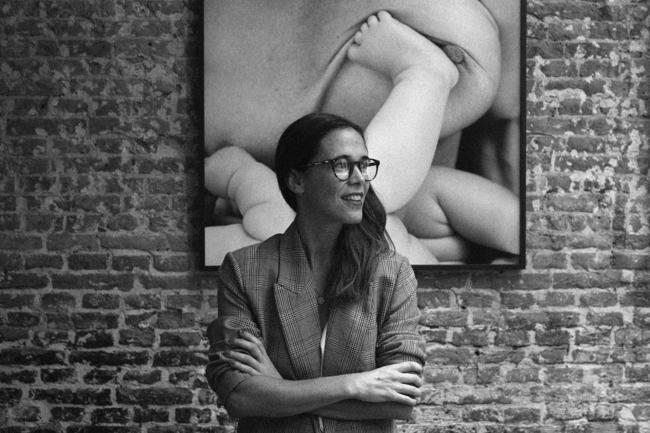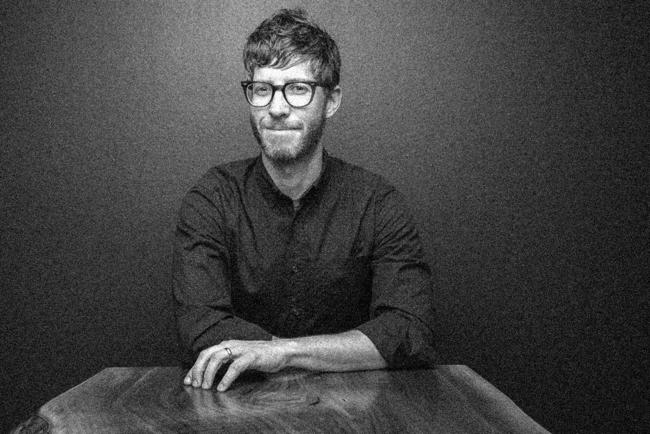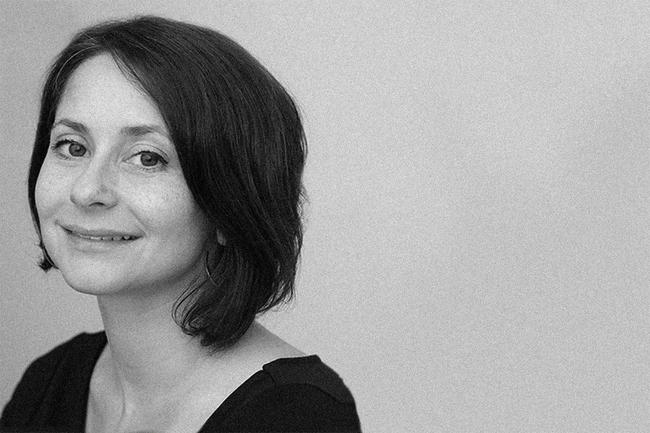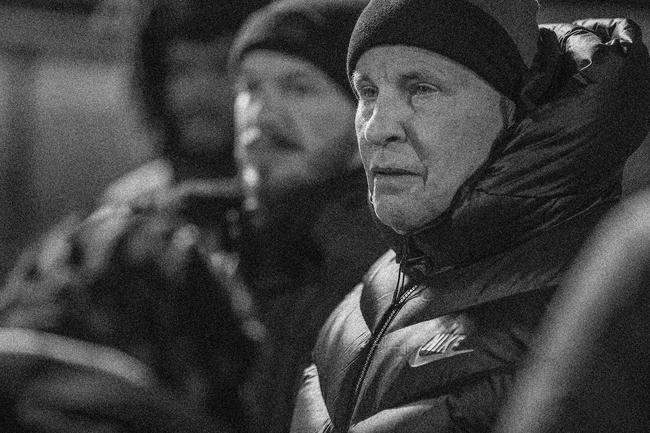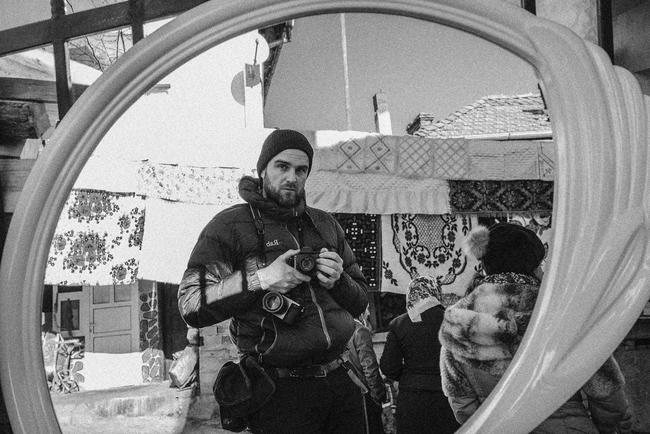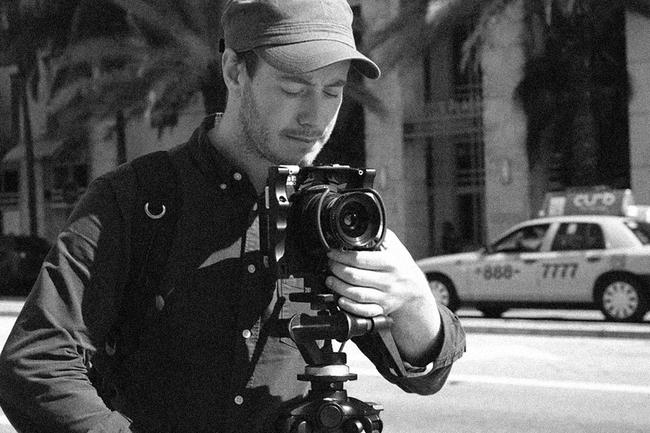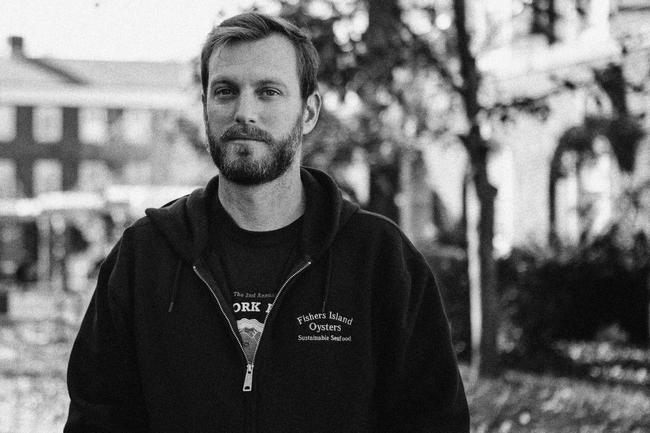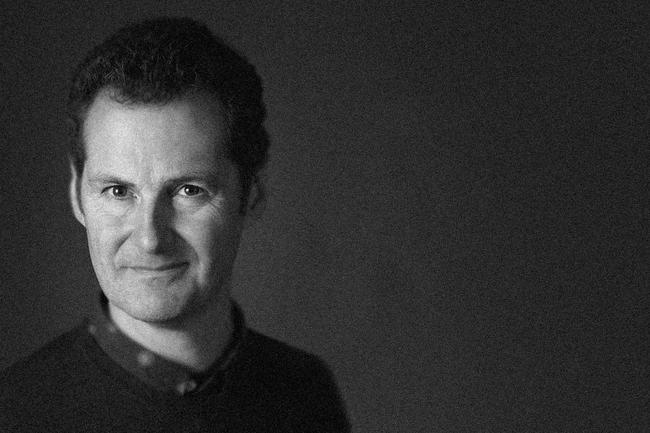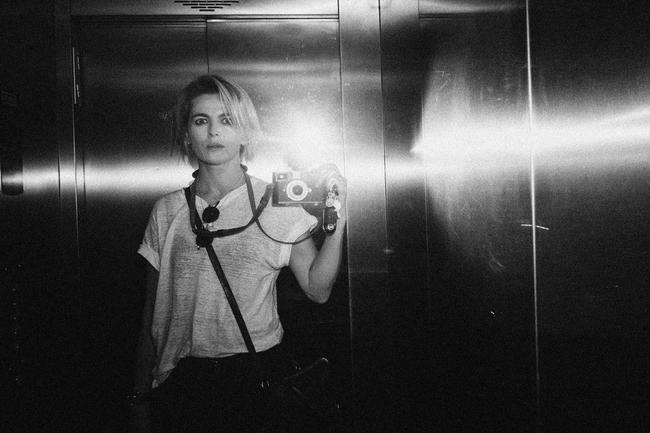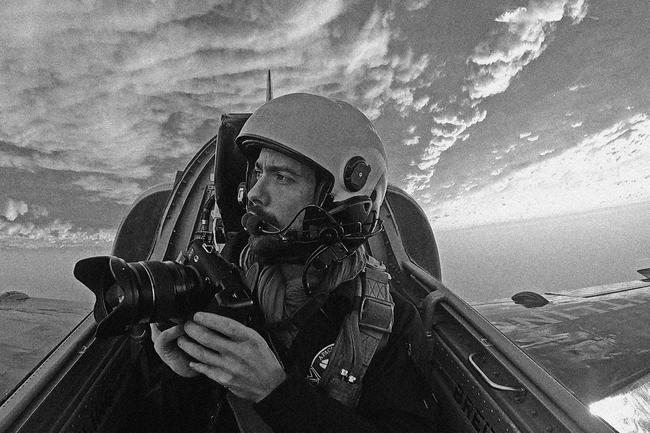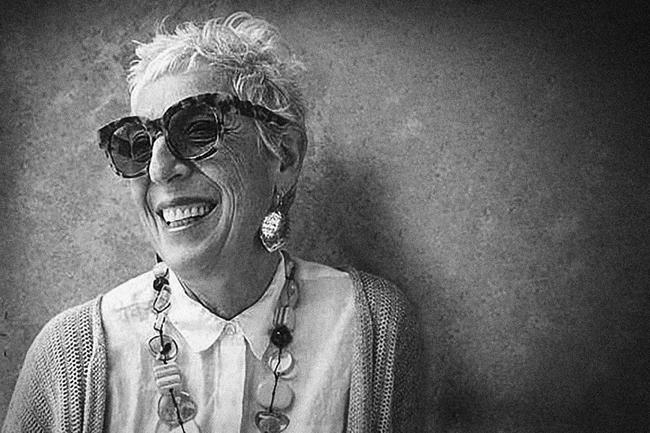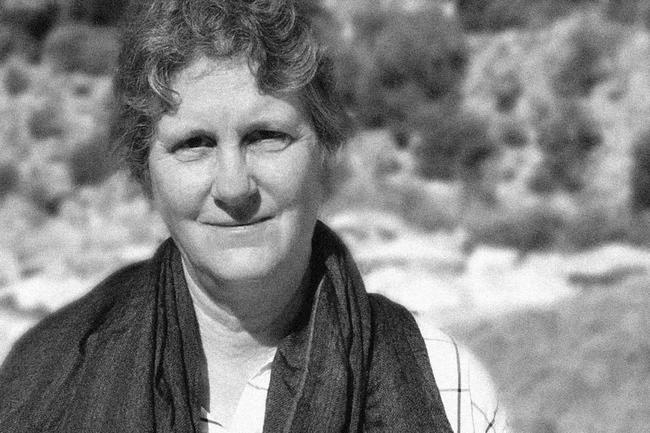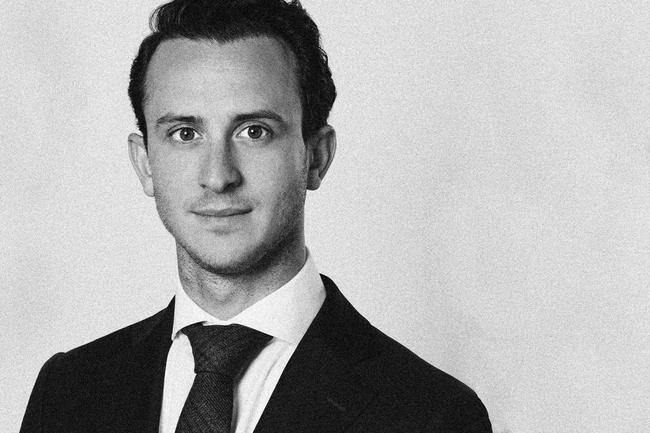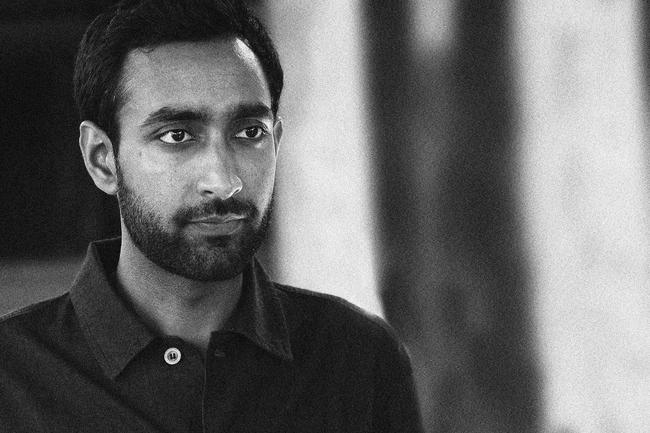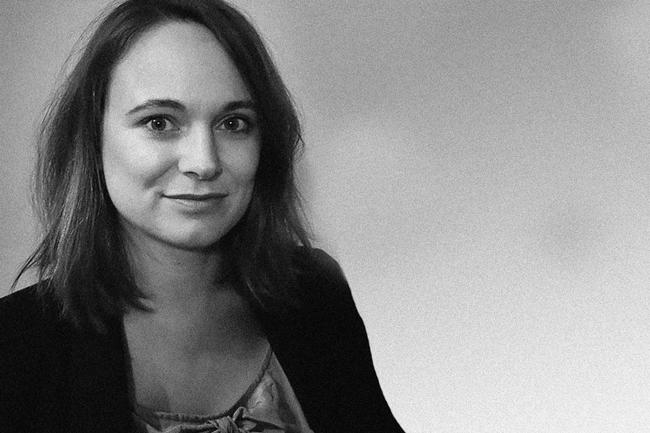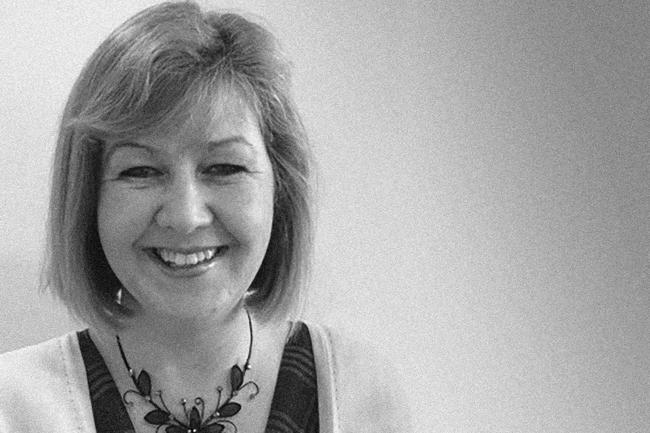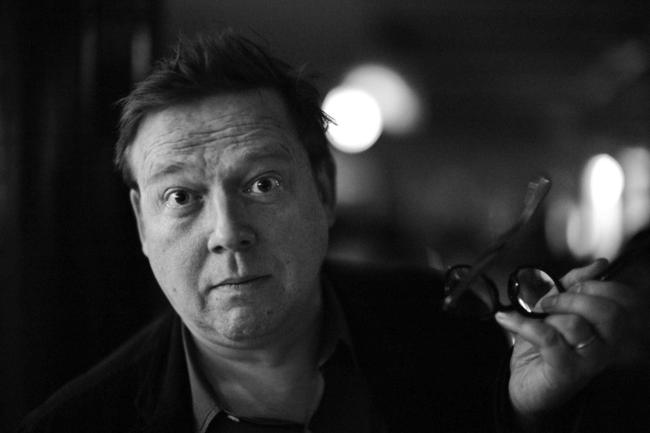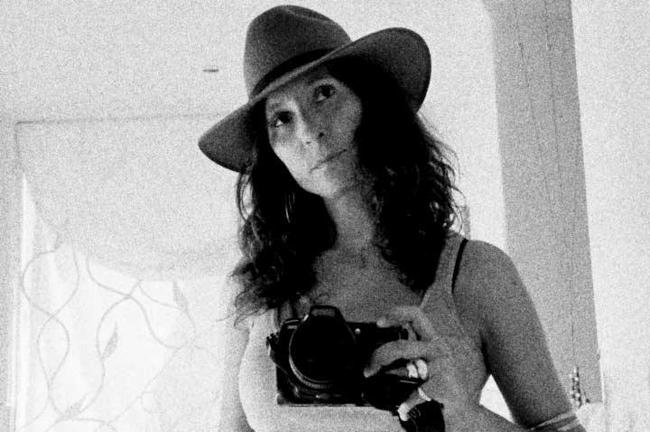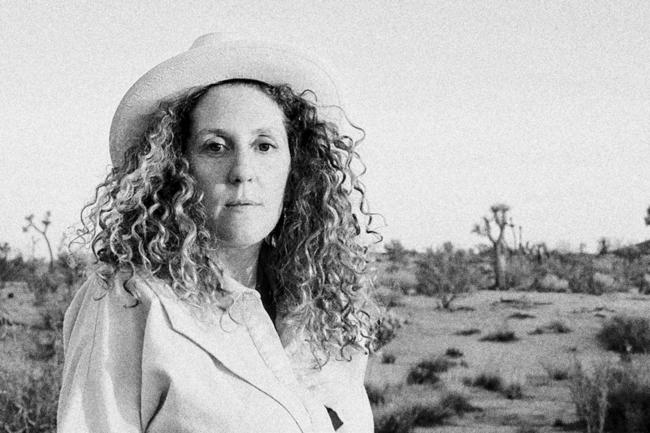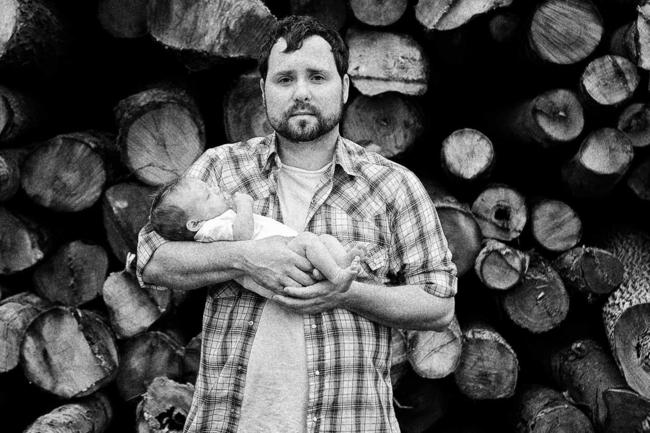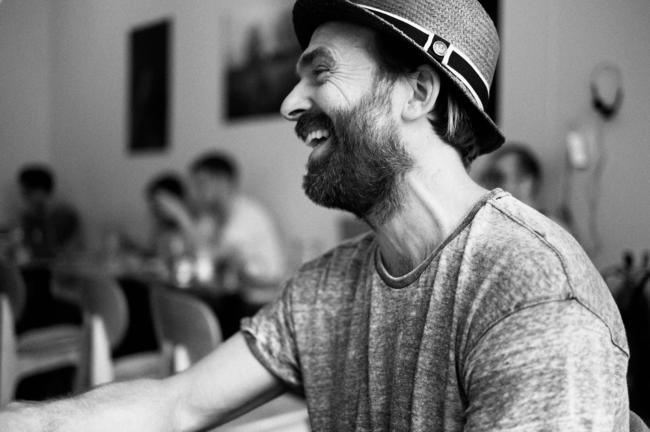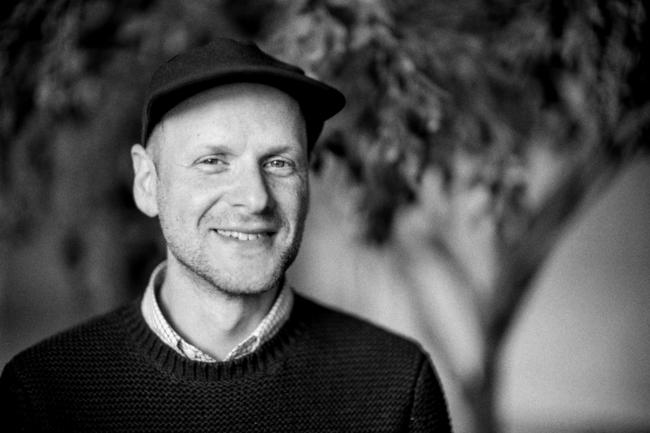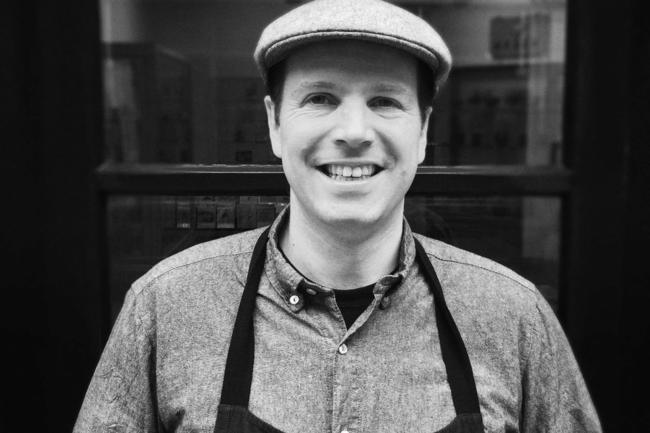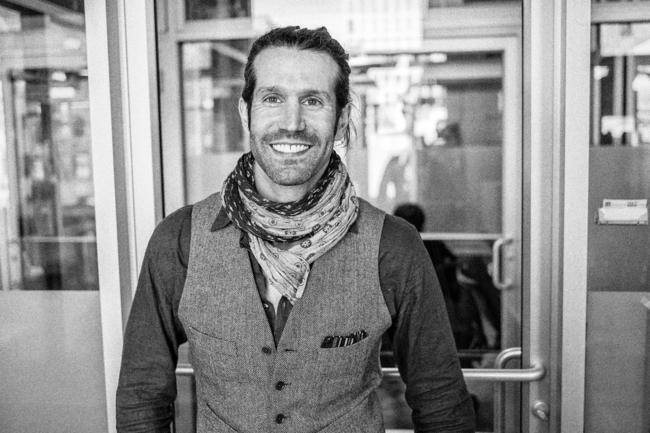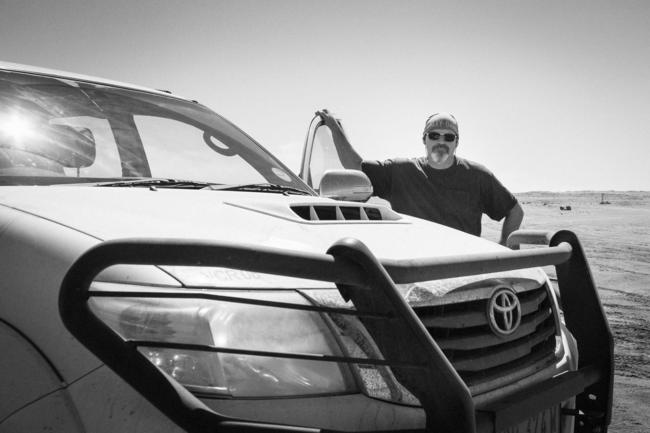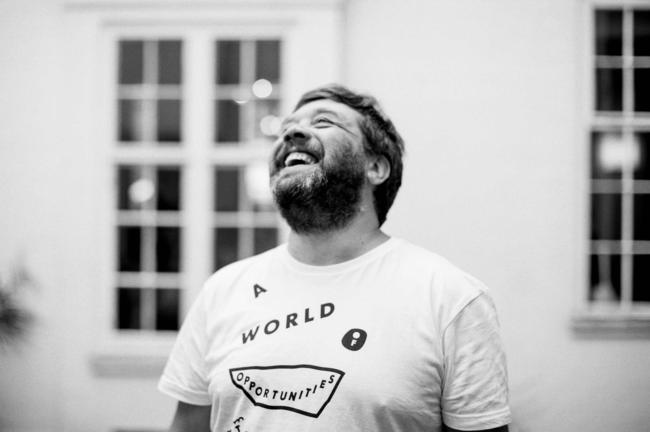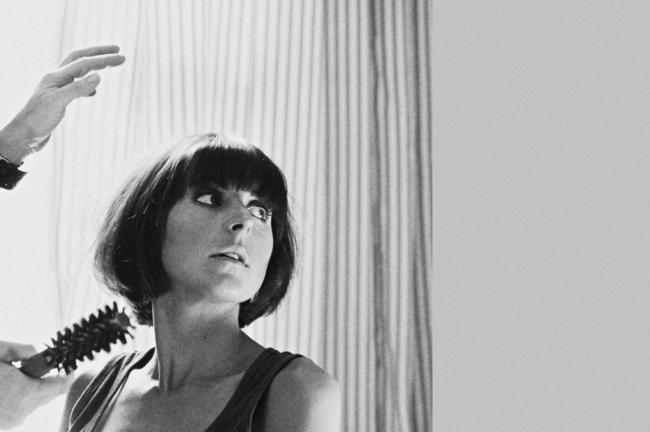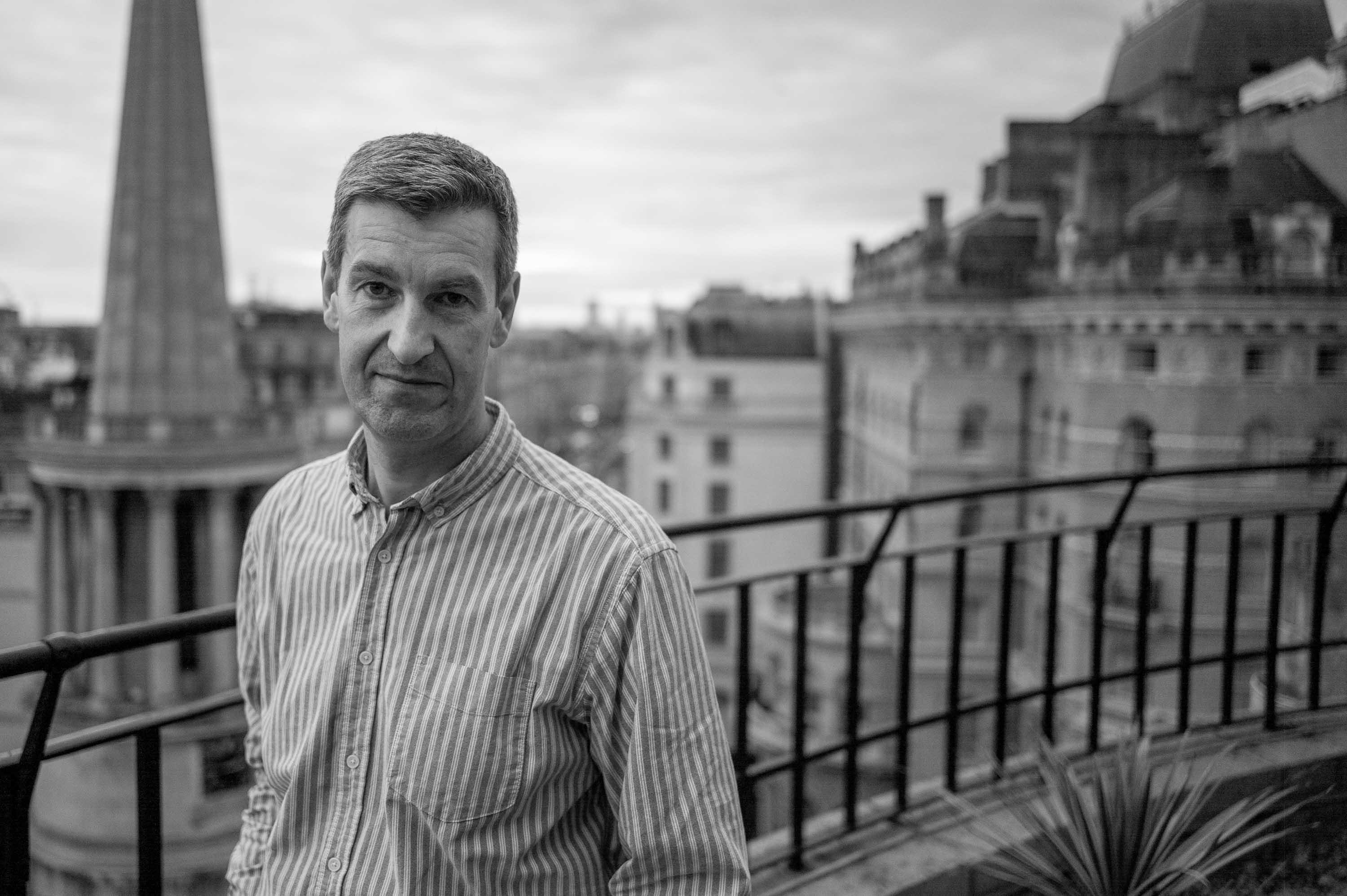
Conversation with the
BBC’s Phil Coomes
As a picture editor at the BBC, Phil Coomes heads up photography for online news. He’s been with the company since Margaret Thatcher and Ronald Regan were both in power, so he’s seen a thing or two. We were curious to know more about Phil and his long-standing career at such an iconic British institution, a place that’s been the epicentre of so much news and storytelling over the decades.
Tell us about your career at the BBC, which has moved from the archive to the news desk via the darkroom.
I’ve been here forever – well, since I was 19, when Margaret Thatcher was prime minister and Ronald Regan was in The White House (back in 1986). I started on a temp job in the news library (archives). There used to be a central news stills library, as back then you would probably use 30-40 stills images in a half hour bulletin as there wasn’t as much video. In those days we’d get hard copy black and white wire [services] pictures and there were massive piles of images that hadn’t really been sorted out until I came in.
And then, like many people, I just ended up staying at the BBC. I worked in archives for many years. Initially it was more filing and archiving, and then editing pictures from stills photographers who would go out and shoot colour transparency film. We were one of the only places shooting news events in colour back then. There was a lot to edit.
When online eventually started, I felt that’s where I needed to be. I joined BBC online as the stills picture editor in the early 2000s and also started shooting pictures for them before that, more than 20 years ago. I was around when the website started. It was after the death of Princess Diana. A couple of journalists who worked here felt the internet was the place to be and the BBC ought to have a presence and have this story on the web. So the news website started from there.
Photo credit: Phil Coomes
What did it feel like at the BBC in the early years after you joined?
Back then, there was very little choice. Obviously there was no online. When I joined the BBC there was just the Six and Nine 9 o’clock news being broadcast. The One o’clock news and on the hour summaries didn’t start until later in 1986. The output was very different to the constant rolling news of today. We didn’t have any computers in the office. It was all typewriters.
How important do think photography is to the BBC and in telling stories?
I would say very important. Obviously the BBC is a broadcast organisation and its money and effort goes into making video and audio. But stills pictures are vital for the website in telling stories as they can be more impactful at the time. They are much quicker at giving information, far quicker than you can give it in video.
At News Online we are running more stills-led pieces than ever. But whatever the format of the story, to sell those to the audience, who are bombarded nowadays from all directions, you’ve got to have a decent promo pic – and that’s a stills thumbnail. So those little pictures on the front page of the site or app are absolutely vital, they are your real estate, your advert that needs to encourage the reader to click.
We have brilliant journalists here working across the BBC, but we are always pressing on them the need to think about what their promo picture is going to be and what picture they are going to use on social. It’s such a key element. It’s never been more important to telling and selling a story.
Photo credit: Phil Coomes
How do you feel about the power of photography to affect emotions and therefore its ability to change behaviour?
I think it definitely has the ability to change people’s views up to a point. I don’t believe in a photograph being the truth. You can bend and manipulate it to be whatever you want it to be, through the usual photographic skills but also the context and text you put around it.
You work mainly for BBC News, collaborating closely with journalists on news stories and features. Tell me about the last work day you remember that felt really momentous or significant?
There have been lots of momentous days, but the one that changed the way we work was the 7 July bombings in London. A call came over the tannoy telling us that a number of Tube lines were down and it soon became clear it wasn’t just a power failure.
This was a time when mobile phone cameras had only been around a few years and when they launched we set up a call for readers to send in their pictures. We were not really looking for news pictures at that stage, but wanted to establish the idea that we wanted to see images from our readers.
So when the July attacks happened we began to receive images from people caught up in the horrific event. These were published in articles and picture galleries of the day. At that point I started to get calls from the newspaper picture desks here in the UK and the U.S., all wanting to get hold of the images. Virtually all of the main pictures from amateurs that day came to us first and were on the front pages the next day.
Of course amateur photos have captured major news events since the beginning of photography. But the fact that these were being distributed directly from the event was new. Today they would be published directly on social media but back then it was still up to the news publishers, from online to print, to carry the news. From then on, user-generated content was something that moved centre stage and became of interest to the TV news as well as online.
Photo credit: Phil Coomes
You are a keen street photographer and love a Leica. Where do you roam and what usually catches your eye?
Sometimes I bring my Leica into work but its peaks and troughs of when I get the time to use it. I am drawn to the mundane stuff, the absurdities of day to day life. I once did a project called Kodachrome 64, publishing a photo a day for 64 weeks on Flickr (taken on Kodachrome), as a farewell to the long-lived film.
What was the aim of this series?
To capture everyday scenes. I had no desire to use it as a visual diary but more a way of seeing the world once more in those Kodachrome colours, which are in fact fairly subdued, and not as bright as you might expect. The project was perhaps a little self-indulgent, but it brought a freedom to take pictures for their own sake. These small personal moments and projects intrigue me: Why did I choose to photograph that in that way at that moment? How would someone else have done it?
As a big film photography fan, do you ever wish digital hadn’t happened?
I wouldn’t wish it away from a production or quality point of view. I think photography has gained a lot, more people are into it and people are more visually aware than ever before. If you look at the launch of the new iPhone 11 Pro, I probably scrolled through 50 per cent of the advertising before I got past the photography bit of it. It’s a phone yet the most important thing to people is the camera.
But I do think the volume of photography today lessens its impact. Sports photography is a good example. The pictures you get these days are mind-blowing – something you could never have done years ago. You look back at some of the great sports photographers of the 1970/80s and if you put the pictures side by side, the ones from today look so amazing. But when you start to think about it properly, about what the photographers back then had actually done to achieve those images, it makes you think again. And sometimes they are quieter pictures, which I’m definitely drawn to these days.
Photo credit: Phil Coomes
Nowadays, pictures are so crisp and perfect, yet the world is not like that, it’s softer at the edges. I wonder if perhaps a little bit of that magic has gone now. But maybe that’s just me getting older.
Maybe it’s taste, age or nostalgia – but the world is a blurry place, it’s not supposed to be high definition all the time.
In the past, if there was a news or sports event, you’d tend to get one incredible picture. But now people want to see live video or 50 pictures from every single angle. And I think it’s that constant scroll through the world now, there’s no editing.
I’ve enjoyed reading some of your photo essays. Who or what have been real highlights for you?
Probably the weird ones, in terms of what I’m drawn to. My random one was rural petrol stations, Fuelling communities. I enjoyed that and I do like a drive. I drove to some great places in Scotland to find the stories behind a number of independent filling stations in remote communities.
Photo credit: Phil Coomes
And then there was my It’s four in the morning series – photographing and interviewing people whose work means they are up at 4am. It wasn’t train drivers or bakers, we found more random people, including a guy who used to photograph urban foxes. That was a good one, if a slightly strange encounter. We met outside an industrial area. I’m parked up there in the middle of the night. A car pulls up, winds its windows down and asks: ‘Are you Phil from the BBC?’ ‘Yes,’ I say. ‘Thank god for that.’
What about career highlights or other special moments with the BBC?
I have been very lucky, with trips abroad and many across the UK. Chernobyl [for the 20th anniversary] was very memorable but there have been others. Trips to Lebanon, the Falklands and the U.S., covering the 2001 election. I also used to shoot portraits of guests on Hardtalk [the BBC’s flagship current affairs interview programme] when it first began. They had more entertainment figures back then, so I got to shoot my childhood hero, Roger Moore, who turned out to be as lovely as everyone says. And others, including Ewan McGregor, Pete Townshend and Bob Geldof. I remember the latter spotted my Leica M6, saying he hadn’t seen one being used for years and also noting it was very noisy as it had an old motor winder attached. Ewan insisted on being photographed in the newsroom at TV Centre rather than my usual quiet spot. As you can imagine, he was soon spotted by the journalists. This was pre smartphones so at least he wasn’t bombarded by them, unlike when the Queen visited the newsroom at Broadcasting House after its opening. Everyone was trying to get their own little picture or video of the moment. I was up on the balcony overlooking the scene.
Photo credit: Phil Coomes
As a motorsport fan, I enjoyed the chance to shoot and record an audio slideshow (remember those?!) on a racing driver at the annual Silverstone Classic. Away from the photographic work, of course I’ve worked on lots of major news stories, elections, the Gulf Wars for the website, editing pictures, commissioning work and producing and writing features.
I suppose there are many answers to what makes a good picture stand out. But what do you feel?
Sometimes it’s visual, sometimes it hits you more emotionally. Sometimes it’s a story and what it’s saying. The story is what makes it. Nowadays, because we’re so saturated with the great visuals, you almost need to go beyond that. In terms of our website, at least, unless you’ve got a stunning picture, it’s quite hard to draw people into it. So those quiet pieces are sometimes quite hard to sell, which is unfair because the pictures are often more interesting and have a longer shelf life.
How has online affected photography?
One thing the web does is bring things to one level. With print, you might have a photographer working on a glorious 10x8 camera, producing these wonderful prints that are 3m across in a gallery and looking fantastic. Once you’ve got them on the web, they are the same size as everything else, so you’ve lost some of that impact.
Photo credit: Alice Zoo
Who are some of your past and present photography idols?
The work I most admire from the past would primarily be classic documentary – from the political work of Robert Frank and Susan Meiselas to street pictures by Tony Ray-Jones and William Klein. For the first two, I think the ability to tell a story visually is such a hard thing to do, especially in Frank’s case, where there was little or no text and yet you get the message loud and clear. I think that much photography which purports to do the same thing usually fails; being just a collection of pictures that rely on words to tie them together.
Tony Ray-Jones was the master of creating something from nothing. It was many years later I found out his wife was often just out of frame. So he would seemingly be taking a picture of her, but of course focusing on the action elsewhere. A neat trick.
My love of Klein came from one of my tutors, Gus Wylie, who instilled in his students to look at the close wide angle work in the crowds, to get closer. He also shot one of my favourite bodies of work, two books from the Hebrides – a masterclass in how to shoot a documentary project.
There are lots of others, including Tom Wood, Paul Graham (especially his A1 project) and Larry Burrows.
Today, there are so many great photographers competing for space in an increasingly noisy landscape. I’m a big fan of Alice Zoo’s portraits, whose work is obviously very visually strong but also addresses issues that are sometimes overlooked. We have commissioned her to shoot a few pieces for us.
Photo credit: Matt Stuart
I do have a soft spot for motorsport so the work of Amy Shore is always a delight. Her pictures are just gorgeous and bring the automotive world to life. Of course, I’m a big fan of street photography, so Matt Stuart’s work is always uplifting.
But I think generally with photography today, you don’t know as many names. The digital world makes it all so transient. There are many great wire photographers out there doing some really powerful work, under intense pressure. People like Leon Neal and Jerome Delay are just two of those whose style stands out.
The BBC is still an iconic institution but things aren’t the same. There is so much choice and competition now.
It’s amazing how many people you meet once worked at the BBC. It was such a draw. When I started here, apart from American ones, it was the biggest player on the planet. It was the only broadcaster – it was your only choice and it was very good. It still is today but obviously now it’s a smaller player.
I think the main difference is that it used to be all linear whereas nowadays it’s not. People of all ages probably consume loads of BBC content but don’t realise it’s the BBC or just don’t care, as it doesn’t actually matter to them. It’s well documented that all age groups come to us for news when it’s a big event, so we are still more trusted than most. The BBC has its faults, I’m sure, but it’s still at heart a really open and honest organisation, trying to tell the truth as best it can.
Photo credit: Witold Riedel
